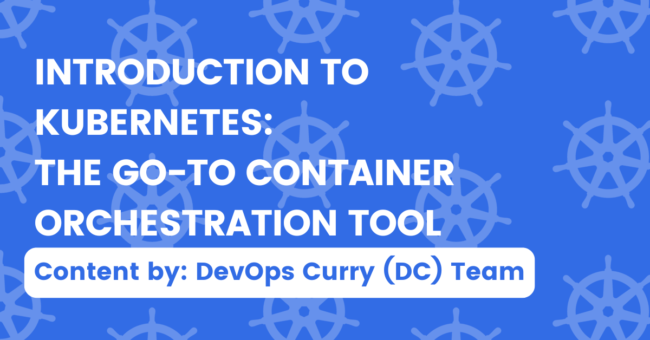An Overview On Kubernetes
What is Kubernetes?
If you google for Kubernetes, you will be hit with terms like orchestration, containers, and docker. But what are these things? And how are they related to Kubernetes?
That’s what we are covering in today’s article. Here, you will be learning about Kubernetes and its working, plus how it relates to the terms mentioned above.
Introduction to Kubernetes: The Go-to Container Orchestration Tool
First, let’s get a brief idea of containers…
Containers are the fundamental units of containerization technology. They are lightweight packages that contain the application code and its dependencies like runtime, libraries, databases, etc. They are highly portable and help improve the speed and efficiency of the development and deployment process. The most popular example of containerization technology is Docker, an open-source platform that uses containers to facilitate the development, testing, and deployment of software’s.
However, although lightweight, the number of containers can often get out of hand for large-scale companies that provide a variety of services. In this case, managing hundreds and thousands of containers requires a separate tool.
That’s where an orchestration tool like Kubernetes comes in…
What is Kubernetes & container orchestration?
AWS defines container orchestration as “…the process of automating the networking and management of containers so you can deploy applications at scale.”As businesses grow, they add more and more services or features to their applications with each of them having their own container. If a business keeps growing in this way, a time comes when there are thousands of containers that need to work simultaneously to keep the whole application well alive. However, managing such huge numbers of containers manually can be impractical and lead to a variety of problems and inefficiencies. This is why a container orchestration tool is required – to manage the containers.
Kubernetes(also known as K8s) is a container orchestration tool that was originally developed by Google and released as an open-source platform in 2014. Although there are other orchestration tools like Docker Swarm and Mesos as well, Kubernetes is the most popular one and is considered an industry standard.
Kubernetes Architecture: Components and Working
Image credits: The Kubernetes Architecture
- Kubernetes cluster: A Kubernetes cluster is a set of nodes (or in simple terms, computers) that run containerized applications. A cluster consists of 2 kinds of nodes: the master node and several worker nodes.
- Nodes: The worker nodes are those that do the actual work of running the applications. The master node, on the other hand, manages these worker nodes by monitoring and scheduling various processes. It is further made up of 3 components: API server, scheduler, and controller manager.
- Components of master node: The Application Programming Interface (or API) server acts as the link between the user and the various components of the K8s cluster. It is through this that one interacts with pods, services, and nodes within the cluster. The controller manager simply monitors the performance of the cluster. The scheduler, as the name suggests, schedules the placement of pods and containers based on the current capacity and availability of resources.
- Pods: A worker node contains several pods which is the smallest unit in Kubernetes architecture. Pods can further contain a single container or a group of containers. All the containers in a pod share the same resources and a common IP address. This IP address is used by pods to communicate with each other. Moreover, pods are ‘ephemeral’ which means they can ‘die’ (i.e. fail) in case of application crash or node failure. The backup, in these cases, is provided by services.
- Services: Failed pods are quickly replaced or recreated by the master node. However, the newly created pod always comes with a new IP address. Since pod failure happens frequently, the IP address also changes often, which can affect the communication network between the pods. To solve this issue, services act as the permanent IP address of a pod. Even if the pod behind a service changes, the service remains as it is and keeps the communication going.
- Kubelet: Kubelet is an important component of the K8s cluster which is present on every worker node. It monitors and facilitates coordination and communication between all the components (pods and nodes) of the cluster.
Benefits of Using Kubernetes
- Kubernetes orchestration helps businesses implement containerization effectively especially when the containers are in hundreds of numbers.
- It can be used to automate container deployment and scaling. During peak times, it can automatically scale up the resources (by adding pods) for better performance. During low traffic, it can scale down the resources (by removing pods) to reduce waste.
- Kubernetes reduces downtime and ensures the availability of the application 24/7 through load balancing and automatic replacement of failed or unhealthy pods.
- It helps to save on costs and resources by automating the various processes mentioned above.
- Kubernetes overall complements and supports modern approaches to software development like DevOps and microservices.

